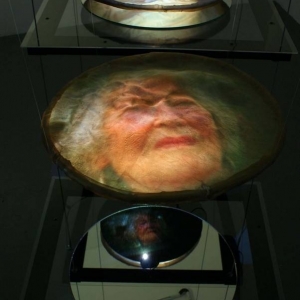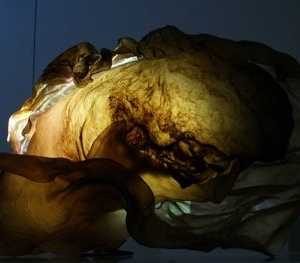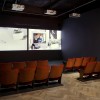The ground level of GV Art Gallery is a world apart from busy Marylebone. One enters into the cyclical world of femininity, playfulness, nature and sensuality: the world of Generation. Czech film-maker Tereza Stehlíková and American sculptor Rosalyn Driscoll collaboratively explore the progression of life through generations of women, creating an installation which merges video and sculpture. We’re offered a tactile and somatic experience of art, inspired by the Greek myth of Demeter and Persephone.
Tereza Stehlíková and Rosalyn Driscoll are members of Sensory Sites, a collective that creates installations exploring the integration of the senses in art. This exhibition is part of their ongoing research into the aesthetic experience using an in-depth interview method developed by French philosopher Claire Petitmengin.
Stehlíková filmed her grandmother, mother and daughter in their country house in Bohemia, focusing on the bonds, tensions and displacements between generations. Driscoll’s sculptures are made of translucent, amber-colored rawhide, providing screens which receive and transform the video projections. In this version of the myth, the boundaries between ‘daily’ and ‘dream’ life – or in other words between conscious awareness and unconscious forces— melt into each other. The land of the living is a silent, flat, black and white landscape, whilst the underworld is a colorful, sensual, senseless yet soothing labyrinth.
Leading us into the myth, the audience first watches a video projection of a young girl in a field: the abduction of Persephone on the gallery’s ground floor. As we continue down the staircase towards Hades, we pass Rift, a sculpture made of white tracing paper that has strategically been torn to emanate Demeter’s screams as her daughter is being taken. To the artists, Persephone’s abduction signifies her transformation into a bride, woman and queen of the Underworld, made manifest in Descent, a sculpture made from hand-made paper and smelling beeswax, onto which bees – making honey – are projected.
“And the girl was amazed and reached out with both hands to take the lovely toy: but the wide path of earth yawned there in the plain of Nysa, and the lord, Polydegmon, with his immortal horses sprang out upon her. He caught her up reluctant on his golden car and bore her away lamenting” – The Homeric hymn of the abduction of Persephone.
According to the myth, mother and daughter would be united again after three long, cold winter months. The artists perceive this longing period as a ‘threshold’ between life and death, confronting us with a womb-shaped rawhide sculpture featuring Stehlíková’s grandmother as she descends into the cellar of their country house. The journey ends with the two women coming together, spreading with the earth the seeds of their unison. Winnowing consists of two half-sphere rawhide sculptures over mirrors, against which Stehlíková filmed herself, her mother and daughter perform the ritual of washing their hair with honey. For both artists, ritual lies in the heart of their work. “There is a ritualistic aspect to the process, which has to do with cycles of returning seasons, of generations, of comings and goings, of greetings and goodbyes”, says Stehlíková.
“The skins used in the installation connote real death – the slaughter of a cow – but how death generates into life through the art”, adds Driscoll. Engaging, clever and haunting, impressions of ‘Generation Art’ linger long after leaving the space. As I leave the gallery and am thrown back into the busy noisy streets of Marylebone, I can’t help but look around for a trace of Demeter.











